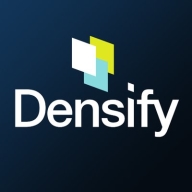

Densify and Red Hat CloudForms compete in the cloud management market. Densify has the advantage in pricing and customer service, while Red Hat CloudForms excels in features, making it ideal for organizations that prioritize functionality.
Features: Densify provides predictive analytics, workload optimization, and dynamic resource allocation. Red Hat CloudForms offers multi-cloud management, extensive automation, and integration with open-source tools. The products serve different needs, with Red Hat CloudForms being more suited for complex environments that require comprehensive management capabilities.
Room for Improvement: Densify can improve by enhancing multi-cloud capabilities, providing better integration with additional third-party tools, and expanding its automation features. Red Hat CloudForms could focus on simplifying deployment processes, streamlining the user interface, and enhancing real-time analytics for better insights.
Ease of Deployment and Customer Service: Densify is noted for easy deployment and responsive customer support, ideal for quick setups. Red Hat CloudForms offers a robust support network, though its deployment can be complex. This makes it suitable for organizations needing detailed guidance and comprehensive service.
Pricing and ROI: Densify is cost-effective with a quicker ROI due to lower initial costs and efficient use of resources. Red Hat CloudForms requires higher upfront investment, potentially leading to a longer ROI period, supported by its extensive capabilities. This suggests Densify is preferred for those with budget constraints, whereas Red Hat CloudForms attracts those willing to invest for broader functionality.
| Product | Market Share (%) |
|---|---|
| Red Hat CloudForms | 1.5% |
| Densify | 0.9% |
| Other | 97.6% |


| Company Size | Count |
|---|---|
| Small Business | 1 |
| Midsize Enterprise | 1 |
| Large Enterprise | 9 |
| Company Size | Count |
|---|---|
| Small Business | 4 |
| Large Enterprise | 7 |
Densify is a hybrid cloud and container resource management platform that makes workloads self-aware of their precise resource requirements and automates the resource management and selection process. This solution helps you control your cloud spend and also helps your apps perform and scale better. Densify enables you to match your cloud requirements with the optimal cloud supply. Additionally, Densify is the only technology that leverages patented, predictive machine learning-powered analytics to perform advanced modeling of workload patterns, and provide precise optimization directives. It is ideal for cloud engineers, container platform owners, and IT finance.
Densify works by:
Densify Features
Densify has many valuable key features. Some of the most useful ones include:
Densify Benefits
There are many benefits to implementing Densify. Some of the biggest advantages the solution offers include:
Manage container, virtual, private, and public cloud infrastructures
Managing a complex, hybrid IT environment can require multiple management tools, redundant policy implementations, and extra staff to handle the operations. Red Hat® CloudForms simplifies IT, providing unified management and operations in a hybrid environment.
As your IT infrastructure progresses from traditional virtualization toward an Infrastructure-as-a-Service (IaaS) model, CloudForms evolves, protecting your investments and providing consistent user experience and functionality.
We monitor all Cloud Management reviews to prevent fraudulent reviews and keep review quality high. We do not post reviews by company employees or direct competitors. We validate each review for authenticity via cross-reference with LinkedIn, and personal follow-up with the reviewer when necessary.